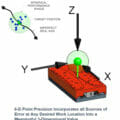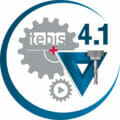A survey by Yokogawa found that more than half of decision makers from global process industries are increasing their investments in industrial autonomy. Following recent analysis of how its customers are using its visual drag and drop Flow Studio, Goran Appelquist, CTO at edge analytics software company Crosser, provides insight into the five most popular analytics modules being used to create data flows in its platform.
Crosser’s Flow Studio allows professionals working in any asset-rich, data generating environments, like that of a factory floor, to build advanced data flows. Choosing from hundreds of pre-built modules, flows are built using a simple drag and drop function.
The Flow Studio is used to combine and configure modules into data flows that collect and process data close to the source it originated. This could be from a machine, mobile asset, local data center or cloud. It’s uncommon to receive data in the format required, so often you need to transform, harmonize and structure the data before applying designated actions and integrations.
One of Crosser’s aims is to fight complexity with simplicity. Usually, monitoring an advanced data flow requires various skill sets to manage each input, but the Flow Studio minimizes the need for additional software developers and data science teams. Pre-built modules don’t require written coding and the stream of the flow can be viewed together and can be managed by one individual.
Let’s examine the five most popular analytics modules.
Property Mapper
Described as the ‘Swiss army knife’ of data transformation, Property Mapper is the most commonly used module in the Flow Studio.
It’s unlikely to receive usable data straight away, so Property Mapper simplifies the processing of data by harmonizing it from multiple sources and treating designated data as one stream. It also supports the scenario of numerous outputs of data that are being sent to multiple destinations, which all require data in different formats, by restructuring data on the way out of the flow.
Python Bridge
All programmers are familiar with Python, the high-level programming language that optimizes code readability. However, this module enables Python code to run as part of a flow and install any third-party libraries. It also makes it easier to write Python in comparison to searching for an ideal pre-built module to execute what’s required.
Text Template
There’s no point in creating a data flow if you can’t communicate the actions associated with that information. Text Template creates dynamic text messages to combine static text with data from your messages. It has two key functions including that it creates human readable notifications for monitoring a condition, and it combines multiple stream values into a single value.
TimeStamp
In a data flow, it’s important to monitor the waiting time during code execution, as well as measure the efficiency of your code. This is where the TimeStamp module is used to stamp data with the time of capture.
Array Split and Join
Array Split is the fifth most used analytics module in the Crosser Flow Studio, although Array Join is used in unison with Split. Arrays are the common format used when data is retrieved from multiple sensors of a PLC or API.
This multisensory data is presented in one large message where sensor values are presented as an array. The Array Split module breaks up the array into individual messages and applies some processing, while Join recombines a stream of messages into an array.
Analyzing how customers use the Flow Studio gives great insight into the functions that matter most to them. IoT operations are complex, but with the perfect recipe of analytics modules, our Flow Studio removes the common complexity and allows a comprehensive understanding of how to create an advanced flow — without the need for surplus staff.
For more information about the Flow Studio or to discover Crosser’s range of solutions, visit https://crosser.io/








